Oliver divided the family up into squads yesterday: kids, teens/pre-adults/older kids, younger adults, and older adults/elderly. I was in the older adults/elderly category.
There were 15 of us for supper at my parents house: more Rukavinas-and-partners than have ever gathered in one place.
Supper was a IKEA-themed, with meatballs (vegetarian and otherwise), boiled potatoes, gravy and salad.
Gifts were exchanged; more gifts than you can possibly imagine (not quite 15 squared, but it seemed that way).
We all disperse to the corners of the continent starting tomorrow when Catherine, Oliver, and I take the early morning jet to Charlottetown by way of Montreal.
Merry Christmas.
I was on a conference call yesterday with a firm based in Phoenix, Arizona and, as I joined the call early, I had a chance to engage in some casual chitchat with the call’s host.
When I revealed to the host that I was calling in from Prince Edward Island, he asked me “what province is that in?” And when I explained that PEI is, in fact, a province unto itself, he expressed a mixture of disbelief, shame at his geographical ignorance, and a commitment to correcting the problem.
All of which got me thinking: as we’ve decided to throw off the shackles of humility and boldly proclaim our collective mightiness, we’re going to have to all dip our oars in the water of raising the Island’s profile globally.
One way of doing this would be for there to be a rapid-response team at the ready, waiting to address issues like my Arizona Situation. I’d like my Arizona contact to receive, posthaste, a package in the mail that helps him address the obvious hole in his geographic knowledge. It wouldn’t hurt if he received hat too. And perhaps a coupon for a free COWS ice cream cone.
Becoming the Mighty Island in truth rather than just aspiration is going to require all of us to do our part; part of our mighty potential are the tentacles of family, business, and society that worm their way out from the Island to all points on the globe; let’s leverage those tentacles to become indoctrination pipelines for spreading the word that we’re here, we’re a province, and we’re ready.
Longtime readers will know of my great affection for Allan Rankin’s song Raise the Dead of Wintertime, a love that last bore public fruit when I used it to introduce my “Walking for Free” talk at Reboot in 2008 in Copenhagen.
The song is timeless; like Ron Hynes’ Sonny’s Dream, it transcends regular space and time and feels like an inviolable aspect of the Island’s cultural identity.
When I was casting about for a theme for the Christmas card I would print this year, my mind went immediately to the last verse of the song:
And when at night we’re by the stove,
Our bellies full and our stories told;
The winds of winter might blow cold,
But none of us will feel it.
Those words, even though they speak to the ways of an earlier day, are so helpful to the soul on a cold Island winter night still. I asked Allan if he’d be willing to allow me to set and print the verse on cards, and he quickly and generously agreed.
As usual when printing with a limited repertoire of typefaces it took some figuring to find the best way of rendering the verse in print: I wanted to print a square card, but the lines were too long for that, and so I compromised and wrapped them under each other, deciding on 18 point Gill Sans (from M&H Type Foundry in San Francisco, also used for the 2010 card) for the body and 12 point of the same face for the credit.
Lacking highfalutin paper in the cupboard, I used commodity Staples-brand white card stock to print on.
I printed 30 cards, and mailed them out to a random assortment of friends and family (if you didn’t receive one, don’t despair; we’re still friends).
Nothing gives me more pleasure than seeing work I print enter into the lives of others upon arrival, and there was no better example of this than the photo that Sarah Bennetto O’Brien posted on her Instagram.
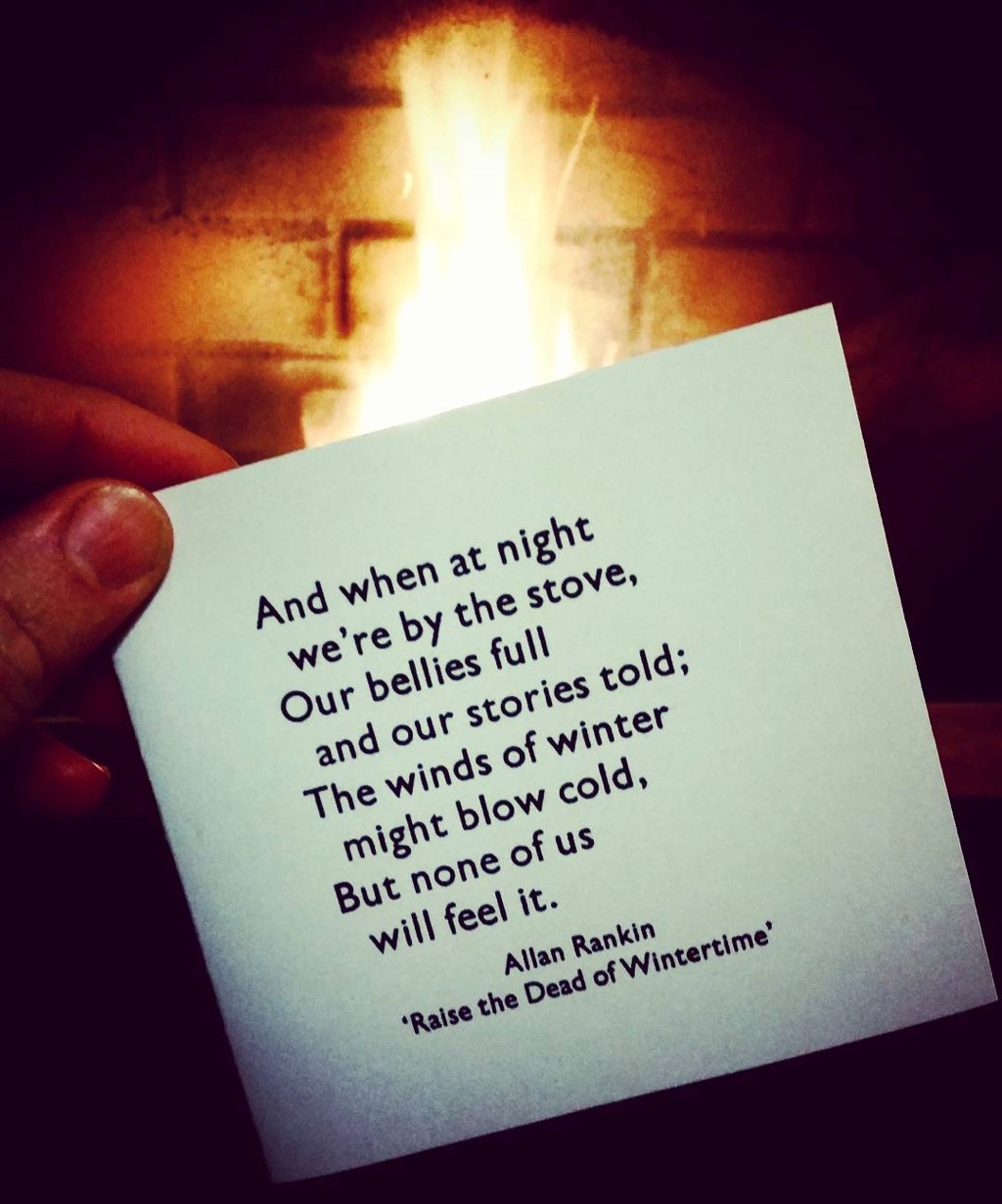
It’s doubly appropriate that Sarah embraced the spirit of the card, as there is perhaps no more enthusiastic practioner of the belly-filling arts on Prince Edward Island working today.
This is the January 1, 2017 schedule.
Maybe you’re looking for the 2018 Levee Schedule?
This is the 2017 levee schedule for New Years Day, January 1, 2017 for Charlottetown, Prince Edward Island and area.
| Organization | Location | Starts | Ends | ♿ Accessible |
|---|---|---|---|---|
| Timothy’s World Coffee | Timothy’s World Coffee 154 Great George Street, Charlottetown, PE |
8:00 AM | 10:00 AM | Yes |
| Lieutenant Governor | Government House 1 Terry Fox Drive, Charlottetown, PE |
10:00 AM | 11:30 AM | Yes |
| Upstreet Craft Brewing | Upstreet Craft Brewing 41 Allen St, Charlottetown, PE |
10:00 AM | 12:00 PM | Yes |
| Mayor of Charlottetown | Charlottetown City Hall 199 Queen St, Charlottetown, PE |
10:30 AM | 12:00 PM | Yes |
| PEI Women’s Institute & Farm Centre | Farm Centre 420 University Ave, Charlottetown |
10:30 AM | 12:00 PM | Yes |
| Island Rotary Clubs | Rodd Charlottetown Hotel 75 Kent Street, Charlottetown, PE |
11:00 AM | 12:00 PM | Yes |
| Mayor of Borden-Carleton | Industrial Mall Board Room 167 Industrial Drive, Borden-Carleton, PE |
11:00 AM | 1:00 PM | Yes |
| The Guild / Discover Charlottetown | The Guild 111 Queen Street, Charlottetown, PE |
11:00 AM | 1:00 PM | Yes |
| The Haviland Club | The Haviland Club 2 Haviland St, Charlottetown, PE |
11:00 AM | 1:00 PM | Yes |
| University of PEI | School of Sustainable Design Engineering 550 University Ave., Charlottetown, PE |
11:30 AM | 1:00 PM | Yes |
| Prince Edward Island Regiment | Queen Charlotte Armoury 3 Haviland Street, Charlottetown, PE |
12:00 PM | 1:00 PM | Yes |
| Mayor of Kensington | Broadway 45 45 Broadway St N, Kensington, PE |
12:00 PM | 1:30 PM | Yes |
| Town of Stratford | Stratford Town Centre 234 Shakespeare Dr., Stratford, PE |
12:00 PM | 1:30 PM | Yes |
| GEBIS Charlottetown, a Buddhist Centre | GEBIS Charlottetown 133 Queen Street, 2nd Floor, Charlottetown, PE |
12:00 PM | 2:00 PM | No |
| PEI Brewing Company | PEI Brewing Company 96 Kensington Road, Charlottetown, PE |
12:00 PM | 2:00 PM | Yes |
| Seniors Active Living Centre | Bell Aliant Centre 550 University Avenue, Charlottetown, PE |
12:30 PM | 2:00 PM | Yes |
| Silver Fox Curling and Yacht Club | Silver Fox Curling and Yacht Club 110 Water Street, Summerside, PE |
12:30 PM | 2:30 PM | Yes |
| City of Summerside | City Hall 275 Fitzroy Street, Summerside, PE |
1:00 PM | 2:30 PM | Yes |
| St. John’s Lodge No. 1 and Victoria Lodge No. 2 | Masonic Temple 204 Hillsborough St., Charlottetown, PE |
1:00 PM | 2:30 PM | No |
| Andrews of Stratford | Andrews of Stratford 355 Shakespeare Drive, Stratford, PE |
1:00 PM | 3:00 PM | Yes |
| Town of O’Leary | Maple Leaf Curling Club 426 Main Street, O’Leary, PE |
1:00 PM | 3:00 PM | Yes |
| Community of Tignish & Tignish Legion | Tignish Legion 221 Phillip Street, Tignish, PE |
1:00 PM | 5:00 PM | Yes |
| Royal Canadian Legion, Wellington | Wellington Legion 97 Sunset Dr, Wellington, PE |
1:00 PM | 5:00 PM | Yes |
| Miscouche Legion | Miscouche Legion 94 Main Drive, Miscouche, PE |
1:00 PM | 6:00 PM | Yes |
| Roman Catholic Diocese of Charlottetown | SDU Place – Old Bishop’s Palace 45 Great George Street, Charlottetown, PE |
1:30 PM | 2:30 PM | Yes |
| Town of Cornwall | Cornwall Town Hall 39 Lowther Drive, Cornwall, PE |
1:30 PM | 3:00 PM | Yes |
| Town of Souris | Eastern Kings Sportsplex 203 Main Street, Souris, PE |
1:30 PM | 3:00 PM | Yes |
| Royal Canadian Legion, Charlottetown | Charlottetown Legion 99 Pownal Street, Charlottetown, PE |
2:00 PM | 6:00 PM | Yes |
| The Kitchen Witch | The Kitchen Witch 949 Long River Road, Long River, PE |
2:30 PM | 4:30 PM | Yes |
| Premier Wade MacLauchlan | Confederation Centre of the Arts 145 Richmond St, Charlottetown, PE |
3:00 PM | 4:30 PM | Yes |
| Benevolent Irish Society | Hon. Edward Whelan Irish Cultural Centre 582 North River Road, Charlottetown, PE |
3:00 PM | 5:00 PM | Yes |
| Ellerslie Legion | Ellerslie Legion 1136 Ellerslie Road, Ellerslie, PE |
3:00 PM | 7:00 PM | Yes |
| 200 Wing Royal Canadian Air Force Association | The Wing 329 North Market Street, Summerside, PE |
4:00 PM | 6:00 PM | Yes |
| Charlottetown Curling Club | Charlottetown Curling Complex 241 Euston St, Charlottetown, PE |
4:00 PM | 6:00 PM | No |
| Sport Page Club | Sport Page Club 236 Kent St, Charlottetown, PE |
4:00 PM | 6:00 PM | No |
| The Alley | Murphy’s Community Centre 200 Richmond Street, Charlottetown, PE |
4:00 PM | 6:00 PM | Yes |
| Charlottetown Firefighters Club | Charlottetown Fire Department 89 Kent Street, Charlottetown, PE |
5:00 PM | 2:00 AM | Yes |
The levee schedule is covered under a Creative Commons Attribution, NonCommercial, ShareAlike License.

Two Firefox browser tips:
- If you type about:support into the Firefox address bar, you get a whole host of useful information about your Firefox; I had no idea.
- If you’re a 1Password user–and you really should be–you can invoke password-filling with Command + Backslash. Again, I had no idea.
I’m promiscuous with my desktop browser: I’ve been flirting with Brave, and occasionally invoke Chrome or Safari. But Firefox, partly for ideological reasons and partly because I know and love it, is the browser that’s my everyday.
That “command backslash” keyboard shortcut is contemporary Canadian English for Command + \.
Which is a good time to mention the bold re-branding by the Heart and Stroke Foundation of Canada from:
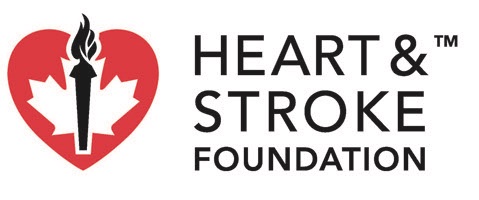
to this:
![]()
This logo requires the interpretation of the second character as a stroke, the British English name for the character that, in North American English, we more commonly refer to as a slash.
With all due respect to the Commonwealth, you’ll seldom hear this called a “stroke” here in Canada–at least not in my digitally-leaning circles–and so this is a risky move by the organization. Which does not, in any way, diminish my love for the idea and its execution.
All of which begs the question: if the British refer to the / character as a stroke, then what do they call the \ character, its backward-facing evil twin?
Wikipedia does not help much. ASCII Pronunciation Rules for Programmers lists backslash, hack, whack, escape, reverse slash, slosh, backslant, and backwhack as “common names.”
So I did what one does in situations like this, and bopped over to the British Library Reference Desk and asked an actual Briton:
Me: Can you tell me what, in common British usage, the name for the \ character is?
Actual Briton: Hello. It’s commonly called the ‘backslash’
Thus were dashed my hopes that Britons call it the backstroke.
I suspect the reason for this is that the character is a modern one; the Oxford English Dictionary defines backslash as:
A symbol in the form of a backward-sloping diagonal line (\) used in programming notation; a reverse solidus.
And it provides the following supporting references:
- 1982 Byte Jan. 413/1 (caption) Arguments enclosed in backslashes refer to disk-file operations.
- 1982 Byte July 146/2 In some cases, they [sc. commands] are bordered by special characters, such as back slashes.
- 1983 Austral. Microcomputer Mag. Aug. 19/2 A path specification must be no longer than 63 characters, including the backslash characters used to separate the directory names.
- 1985 Personal Computer World Feb. 191/1 All Knowledge Man commands proper are accessible within K-Text by prefacing them with a backslash.
- 1986 Which Computer? Oct. 59/1 The single line of topics evoked by pressing Lotus’s backslash key.
Of note, as well, from the OED, is that other meanings of the word stroke include “a disease in the eyes of hawks,” “a blight on wheat, honey-dew,” and “a call played on the horn” in addition to the “linear mark; a mark traced by the moving point of a pen, pencil, etc.; a component line of a written character” (which dates from 1567, 415 years before the Byte caption invoked backslash).
Oh, and that Byte caption? Here it is in the Internet Archive of the magazine; it reads (emphasis mine):
Listing 2: A Morse-code generator program written in Cromemco 32 K Structured BASIC that illustrates some of the concepts of structured programming. Text for translation to Morse code is read from a disk file. Here the BASIC keywords use only an- initial capital letter, instead of the usual all-capital style. Long variable names are used, and names of procedures begin with periods. Arguments enclosed in backslashes refer to disk-file operations.
How lovely that a new character springs to life in the description of a digital Morse code generator. And how great it is that the Internet Archive has digitized Byte.
My friend and personable coffee shop owner Chris Francis sent me a link to this compelling little video series about fika produced by Sweden.
I’ve spent a lot of time in Sweden over the last decade, and much of that time has been spent doing the activities described as fika in the videos, but nobody has ever referred to these activities as fika to me.
I suspect that the reason for this is that all of my Swedish friends are enormously accommodating to my unilingual Englishness.
And so whereas they may, within the inner sanctum of their Swedishness, be saying something like “Låt oss hoppa över arbetet i eftermiddag och gå ut för några avkopplande fika tid,” to me they will simply say “coffee?”
Such is both the promise and the curse of existing in the warm cocoon of a flexible lot of polylinguals.
Regardless, called fika or not, I can attest that this action–or rather inaction?–is much alive and as described.
The fika and the lifestyle that supports it are, indeed, the cat’s pajamas.
In the shadow of our legislators debating the relative PISA exclusion rates of Kazakhs vs. Prince Edward Islanders in the Legislative Assembly, I was asked on the street, by a prominent local business leader, what I thought of the PISA test results, released last week with much fanfare.
Let me answer here with a similar response to the one I gave her.
My son [[Oliver]] has had some issues with anxiety around unexpected changes in the school routine this fall: one hour delays, early closures, the ever-looming possibility of snow days, all have thrown his personal space-time continuum into disarray. It’s been a stressful time for him and for those that support him.
Monday was a particularly stressful day, with a combination of a one hour delay plus our car being in the shop, meaning we had to take the city bus to school. Oliver held it together pretty well until he got to school; once there, though, the bottled up stress of the exceptional day spilled out.
His experienced, insightful educational assistant guided Oliver toward capturing his feelings on paper, and this led them to a long discussion about anxiety and routine and ways of dealing with it, an exercise that included developing some helpful cards:
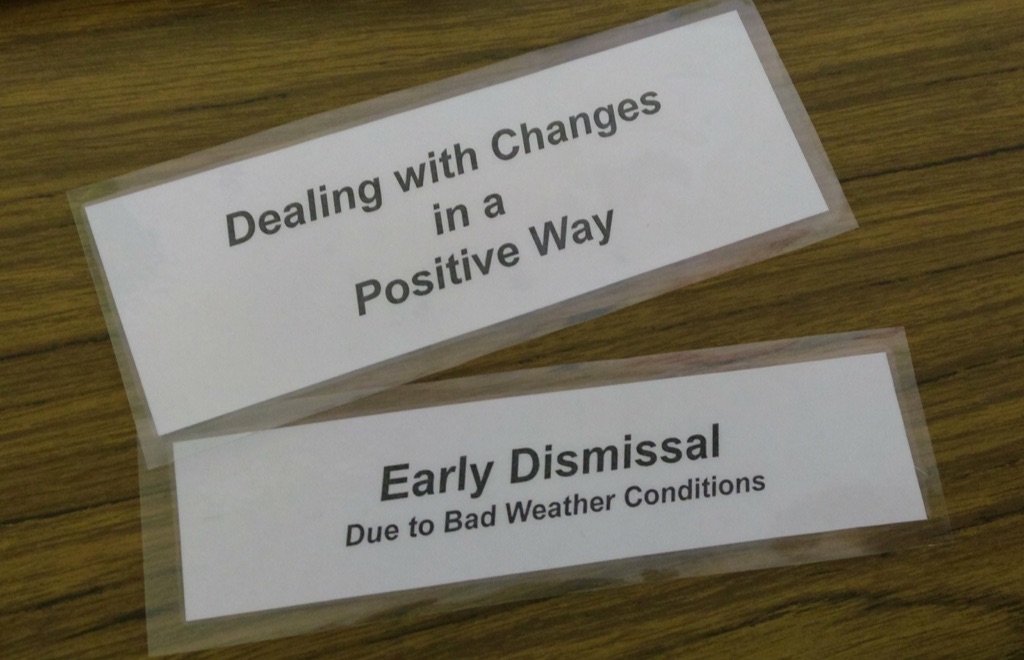
Today happened to be another exceptional school day: only an hour after I dropped Oliver off at school, it was announced that schools would be closing 2 hours early. I immediately jumped on my phone and had a quick back and forth with the school, and we decided to play it by ear: if Oliver reacted badly to the news, I’d come right up and get him; if he was okay, we’d wait until 12:30 p.m.
What happened next was simply wonderful: Oliver was able to communicate that he was anxious about the early closure, and that if he stayed longer at school he’d likely get more anxious, and probably angry. He decided it was a good idea for me to come and pick him up right away. And so I did. And when I arrived at the school he was happy, calm, and ready to come home.
This might seem like a small thing, but it’s not: it was a huge leap, that took a lot for Oliver to achieve, and a lot of effort by his educators to help him toward. I’m so proud of him, and so thankful for them.
PISA testing – or really any sort of standardized testing – doesn’t measure this kind of victory, nor does it measure anything about the individual strengths, weaknesses, challenges and opportunities of students in any way that’s particularly meaningful to the individual and their support networks, whether they be typical or atypical learners, included in the PISA testing or excluded.
So my honest answer to “what did you think of the PISA results?” is “nothing at all,” for they don’t measure things that are of any importance to me.
Much of the rhetoric surrounding the release of the PISA results used the language of sports — “We are statistically sound on the results and the outcomes and continue to be extremely proud, and we need to start celebrating and acknowledging our successes as a province and standing proud that we’re competing with the best”, said the Minister of Education, Early Learning and Culture in the House yesterday in response to the Kazakhstan question.
I don’t think of learning as a competition, and, indeed, whereas others will invoke the “demands of the digital economy” as justification for increased competitive metrics, I see in the digital economy the possibility of redoubling our efforts to recognize that we can approach each learner as an individual, not as members of a competitive learning team flying the flag for PEI.
Whether a learner is freaked out by snow days, interested in space travel, learns better in the woods than the classroom, or doesn’t really wake up until noon, we are far more likely to nurture successful, prosperous citizens if we step away from the recent focus on measuring community health and, instead, confront each learner on their own terms.
I was surfing through the Wayback Machine this afternoon and came across the earliest digital manifestations of Prince Edward Island’s Hansard from April 1996, 20 years ago.
What I’d forgotten is that when we created the system to post Hansard online, PDF as a format for distributing documents was not widely adopted (it was only 3 years old at the time). Although it would likely have been possible to read a PDF version of Hansard at the time, the creating of it would have been locked up inside expensive, proprietary software that wouldn’t have connected to the word processing system of the day used to create it, at least not without great expense.
We were a hearty, lean band of web-makers. And so we used HTML.
If memory serves this worked through some sort of automated Perl script that sucked in the word processor file and output HTML. I wish we’d been better at archiving things.
The benefits of this approach were manifest: not only could one read Hansard in any old web browser, but because we were able to structure the data and produce works of beauty like this page indexing a day’s sitting by MLA speaking.
So you can, for example, see all the things that Alan Buchanan said on April 17, 1996, and then jump directly to each one. Like this, where he answered a question on the introduction of the 911 system to the province (“we hope to begin work on the development of the system and have it completed within the year”).
The PDF version is all that the contemporary Legislative Assembly produces; understandable for workflow reasons, perhaps, but a shame that we had, at the very dawn of the web, a more open, “web-like” solution to spreading Hansard far and wider.
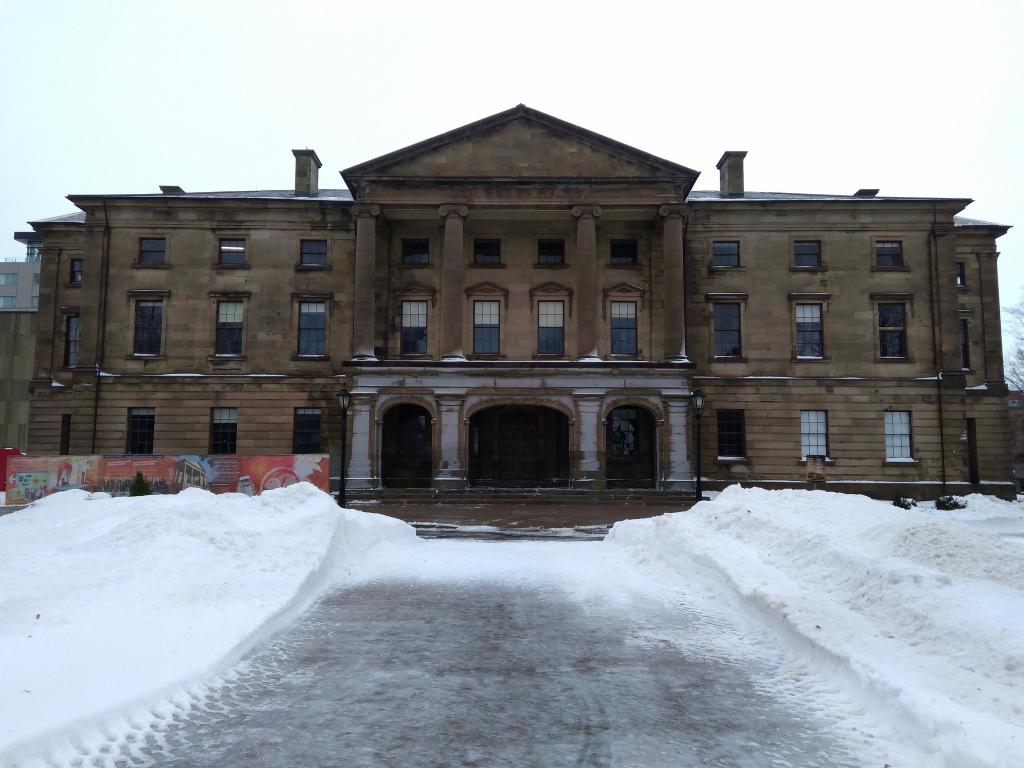
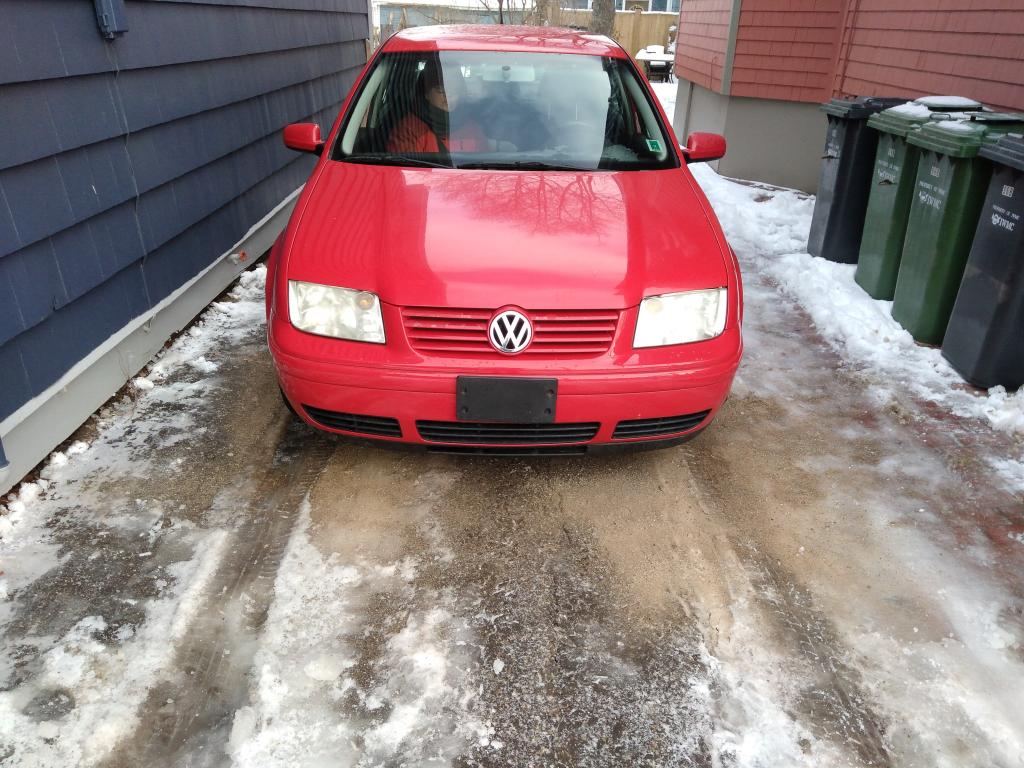
 I am
I am